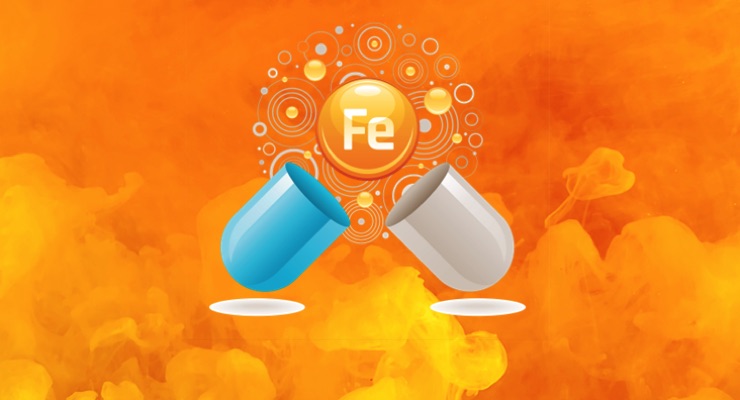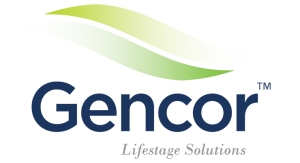Iron deficiency can lead to anemia, which affects around 40% of children and 30% of reproductive age women1 and can have major health consequences if not addressed or untreated.
In 2019, the global point prevalence of anemia was highest in the 15-19 and 95+ age groups in females and males, respectively. Also, the burden of anemia was lower in regions with higher socio-economic development.2 Globally, most of the prevalent cases were attributable to dietary iron deficiency, as well as hemoglobinopathies and hemolytic anemias.
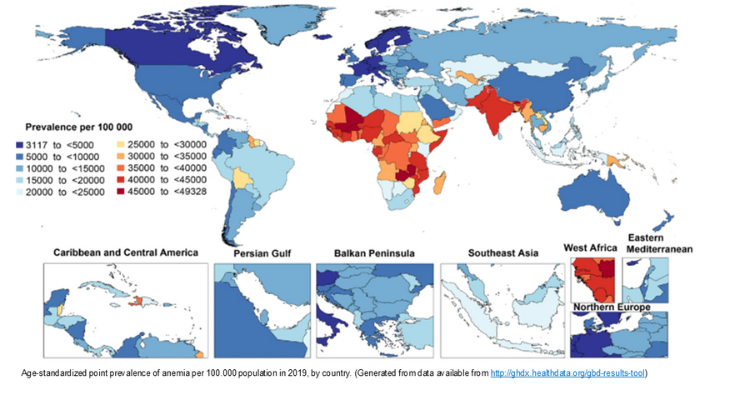
With more and more dietary issues being diagnosed, more people moving away from animal protein and food allergies on the rise, the importance of getting iron from dietary intake is becoming a challenge. The implementation of preventive programs with a focus on improving access to iron supplements, early diagnosis, and the treatment of hemoglobinopathies are possible solutions to this global issue.
Trying to do the right things to be healthy can be complicated and sometimes confusing. For example, if you are iron-deficient and want to take antioxidants to support your overall health, you may have a challenge. Why? Research has shown that certain antioxidants will decrease the amount of iron your body can absorb and increase your risk for iron deficiency.1,2
Certain foods that contain polyphenols and tannins may inhibit iron absorption,3 while antioxidants such as vitamin C improve iron absorption.4 Polyphenols are widely present in the human diet as components of fruits, berries, vegetables, spices, and whole grains. They are exceptionally high in tea, coffee, red wine, and some botanicals.
Phenolic compounds inhibit iron uptake by a complex formation of chelates with iron in the gastrointestinal lining.5,6 In some cases, the common spice turmeric, from which curcumin is derived, has shown to decrease iron absorption and cause iron deficiency too.7

They further found that individuals who were administered HydroCurc® and ferrous sulphate (a low-dose iron) supplement experienced a significant increase in BDNF, which has been described as an important neurotrophic factor contributing to learning and memory; it also demonstrated that HydroCurc® and iron showed a reduction in oxidative stress and systemic inflammation.
Study 1 (Published August 2020)
This study evaluated the effects of co-administration of ferrous sulfate (FS) and the highly bioavailable curcumin supplement (HydroCurc®) on serum BDNF (Brain-Derived Neurotrophic Factor) in healthy adults. Over a six-week double-blind, placebo-controlled period, participants (155) took either:
- Placebo for both FS and curcumin
- Low dose FS (18 mg) plus placebo
- High dose FS (65 mg) plus placebo
- Low dose FS (18 mg) plus 500 mg HydroCurc®
- High dose of FS (65 mg) plus 500 mg HydroCurc®
The results showed that the combination of FS plus HydroCurc® not only increased serum BDNF levels, but it also showed increased ferritin levels in people with low ferritin levels (up to 58%) while not causing an increase in ferritin levels in those within the normal range. Ferritin tests help show how much iron your body stores. Increases in ferritin levels indicate more iron has been absorbed and stored in the body.
Study 2 (Published July 2021)
This second study looked directly at the impact of taking FS plus the highly bioavailable curcumin supplement (HydroCurc®). Like Study 1, the same number of participants and dosing was used. This was an acute study where blood samples were taken at 0 minutes and 180 minutes following supplementation. The results of the study showed:
- A significant difference was observed in mean serum iron at the 180-minute endpoint for all groups consuming FS;
- A significant difference in whole blood hemoglobin was seen in all treatment groups, especially effective in the high FS + Curcumin group;
- All groups receiving FS (or FS plus curcumin) demonstrated an increase in transferrin saturation in a dose-related manner.
This study demonstrated for the first time that regardless of FS dose, formulated curcumin in the form of HydroCurc® does NOT negatively impact acute iron absorption in healthy humans.
Study 3 (Published February 2022)
The third study was a double-blind, placebo-controlled randomized trial assessing whether the co-administration of FS with HydroCurc® could reduce systemic inflammation and/or gastrointestinal side effects. Like the previous two studies, 155 healthy adult participants took one of the five treatment protocols. In addition, completed questionnaires and blood samples were collected at baseline (day 1), day 21 (mid-point), and day 42 (endpoint).
The results showed several interesting points:
- There was a reduction in inflammation-related markers (IL-6, TNF) in response to the co-administration of FS and HydroCurc®, suggesting a reduction in systemic inflammation;
- There was a significant association with darker stools when comparing placebo iron and the high dose FS group. This suggests that a high dose of iron without the use of curcumin leads to darker stools;
- The co-administration of FS and HydroCurc® may be a more cost-effective and convenient alternative to current oral iron treatments.
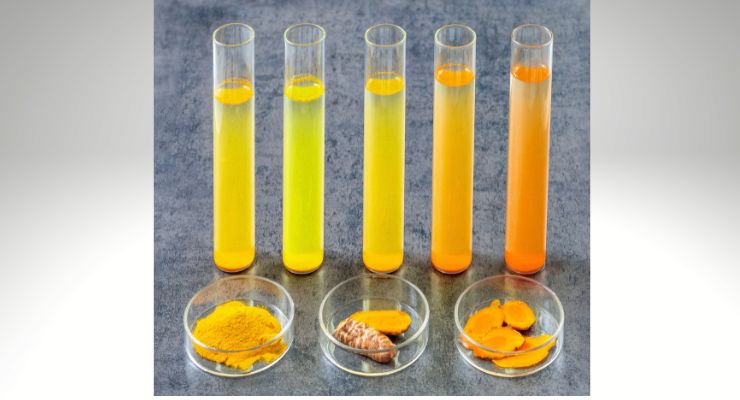
Conclusion
With consumers more aware of the beneficial effects of a high-antioxidant lifestyle, it is essential to note that antioxidants may pose an adverse health risk for those with a propensity to have iron-type anemia.The studies above show that the potent antioxidant curcumin administered in the highly bioavailable form HydroCurc® does not harm iron absorption or iron stores (ferritin). In addition, combining HydroCurc® with FS can also decrease inflammation-related markers and reduce the side effect of iron (black or tarry stools).
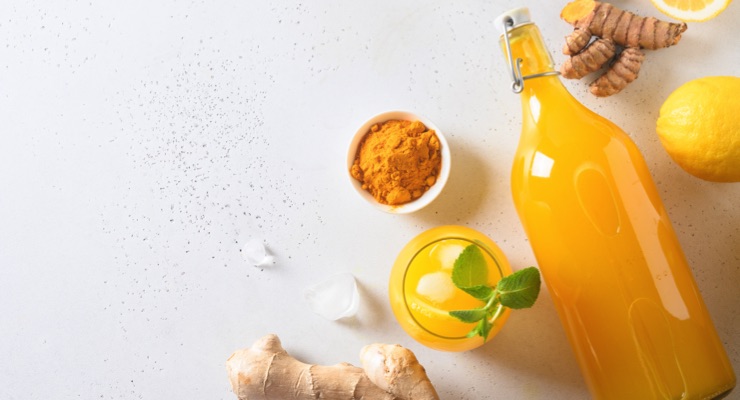
References
1. Safiri, S., Kolahi, AA., Noori, M. et al. Burden of anemia and its underlying causes in 204 countries and territories, 1990–2019: results from the Global Burden of Disease Study 2019. J Hematol Oncol 14, 185 (2021). https://doi.org/10.1186/s13045-021-01202-2
2. https://www.who.int/data/gho/data/themes/topics/anaemia_in_women_and_children
3. Milman NT. A Review of Nutrients and Compounds, Which Promote or Inhibit Intestinal Iron Absorption: Making a Platform for Dietary Measures That Can Reduce Iron Uptake in Patients with Genetic Haemochromatosis. J Nutr Metab. 2020;2020:7373498. Published 2020 Sep 14. https://www.hindawi.com/journals/jnme/2020/7373498/
4. Hallberg L, Brune M, Rossander L. The role of vitamin C in iron absorption. Int J Vitam Nutr Res Suppl. 1989;30:103-8. PMID: 2507689.
5. Brune M., Hallberg L., Skånberg A. B. Determination of iron-binding phenolic groups in foods. Journal of Food Science. 1991;56(1):128–131. https://ift.onlinelibrary.wiley.com/doi/10.1111/j.1365-2621.1991.tb07992.x
6. Andjelkovic M., Vancamp J., Demeulenaer B., et al. Iron-chelation properties of phenolic acids bearing catechol and galloyl groups. Food Chemistry. 2006;98(1):23–31. https://www.sciencedirect.com/science/article/abs/pii/S0308814605004498
7. Jiao Y, Wilkinson J 4th, Di X, et al. Curcumin, a cancer chemopreventive, and chemotherapeutic agent, is a biologically active iron chelator. Blood. 2009;113(2):462-469. doi:10.1182/blood-2008-05-155952
8. Tiekou Lorinczova H, Fitzsimons O, Mursaleen L, Renshaw D, Begum G, Zariwala MG. Co-Administration of Iron and a Bioavailable Curcumin Supplement Increases Serum BDNF Levels in Healthy Adults. Antioxidants (Basel). 2020;9(8):645. Published 2020 Jul 22. doi:10.3390/antiox9080645
9. Lorinczova HT, Begum G, Renshaw D, Zariwala MG. Acute Administration of Bioavailable Curcumin Alongside Ferrous Sulphate Supplements Does Not Impair Iron Absorption in Healthy Adults in a Randomised Trial. Nutrients. 2021 Jul 3;13(7):2300. doi: 10.3390/nu13072300. PMID: 34371810; PMCID: PMC8308323.
10. Tiekou Lorinczova H, Begum G, Temouri L, Renshaw D, Zariwala MG. Co-Administration of Iron and Bioavailable Curcumin Reduces Levels of Systemic Markers of Inflammation and Oxidative Stress in a Placebo-Controlled Randomised Study. Nutrients. 2022; 14(3):712. https://doi.org/10.3390/nu14030712

